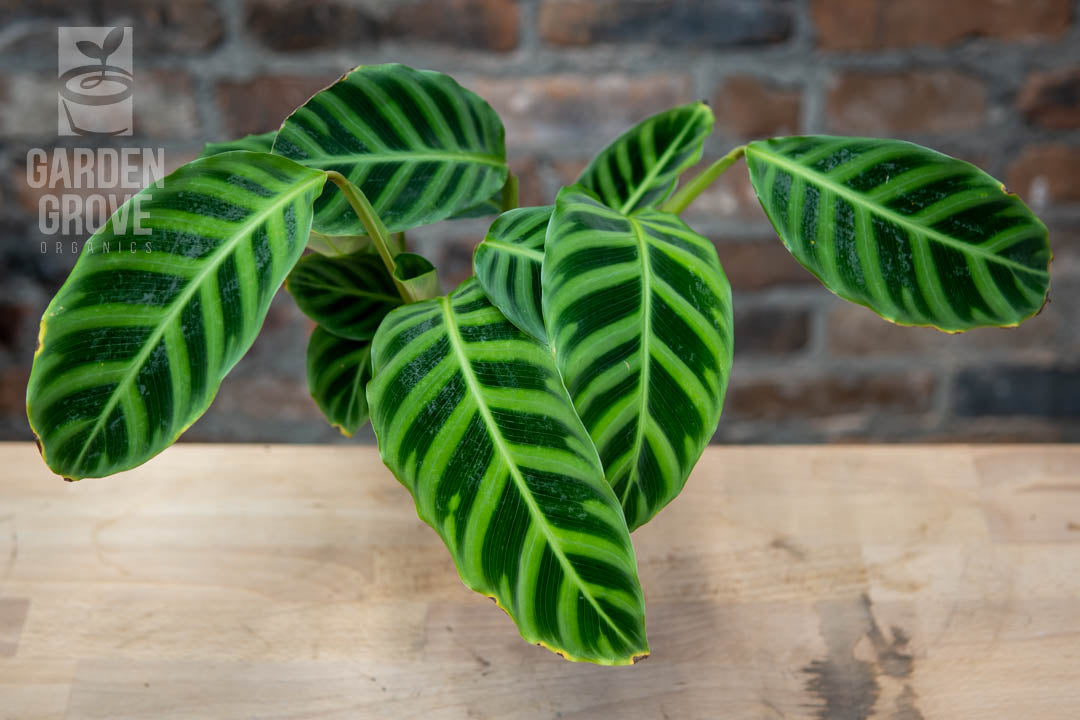Description
Calathea zebrina, also known as the Zebra plant or Zebra calathea, is a popular tropical houseplant prized for its stunning foliage. Native to the rainforests of Brazil, it belongs to the Marantaceae family and is well-loved for its unique zebra-like patterns on the leaves.
The leaves of Calathea zebrina are large, elongated, and have a lanceolate shape. They grow in an upright manner and can reach a length of about 12 inches (30 cm). The main attraction of this plant is its striking pattern of alternating dark green and light green stripes that resemble zebra stripes, hence the common name.
Aside from the eye-catching pattern, the leaves have a velvety texture and are slightly wavy along the edges, adding to their visual appeal. The underside of the leaves has a beautiful deep purple color, which becomes more prominent when the leaves fold upwards at night, a characteristic shared by many plants in the Calathea genus.
In terms of care, Calathea zebrina requires specific conditions to thrive:
-
Light: Provide bright, indirect light for the Zebra plant. Avoid direct sunlight, as it can scorch the leaves. Place it in a well-lit area away from windows with direct sunlight or use a sheer curtain to filter the light.
-
Temperature: Maintain a warm and consistent temperature between 65°F and 80°F (18°C to 27°C). Protect the plant from cold drafts and temperature fluctuations.
-
Humidity: Calathea zebrina thrives in high humidity levels. Increase humidity by placing the plant on a tray filled with water and pebbles or using a humidifier. Misting the leaves regularly can also help create a humid environment.
-
Watering: Keep the soil consistently moist but not soggy. Water the plant when the top inch of the soil feels dry. Ensure proper drainage to prevent waterlogged roots.
-
Soil and Potting: Use well-draining soil that retains moisture but allows excess water to drain away. A mixture of peat moss, perlite, and potting soil works well. Repot the plant when it becomes root-bound.
-
Fertilization: Feed Calathea zebrina with a balanced, water-soluble houseplant fertilizer during the growing season. Dilute the fertilizer according to the instructions and apply it every two to four weeks. Reduce or stop fertilization during the plant’s dormant period.
-
Air Circulation: Good air circulation is essential to prevent stagnant air and the risk of fungal diseases. Provide gentle air movement through natural ventilation or a fan.
Calathea zebrina is a stunning and relatively low-maintenance plant that can add a touch of tropical beauty to your indoor space. With its distinct zebra-like patterns and unique leaf movements, it is sure to be a conversation starter. By providing the right growing conditions and proper care, you can enjoy the beauty of Calathea zebrina and watch it thrive in your home.



Reviews
There are no reviews yet.